An Unhelpful Obsession
Since video cameras became commercially available, golfers have been obsessed with putting their swing on film. Now, with a 4K camera in every pocket, it’s an obsession that’s available to every golfer. Unfortunately, it’s one that is not helping your game the way you think it is. In this lesson, I’m going to explain why.
Quick Disclaimer: This isn’t about instructors using video in lessons. I don’t love video, but I can appreciate that it has its place in some lessons. This is about you, the golfer, filming your own swing.
Find this lesson in podcast form HERE
This Lesson Is For You If:
You film your golf swing
You’re thinking about filming your golf swing
You’d like to get better at golf
The One Exception
I can think of one case where filming your golf swing makes sense, and it’s this: if you are currently working with a golf instructor, and you need to check in between lessons.
Even in this scenario, I would add two major caveats. First, I would not suggest filming your swing unless your instructor has shown you exactly how to film your swing, with the actual equipment you’re going to use. If you’re going to use an iPhone on a tripod, take it to your lesson and measure out exactly where it needs to go with your instructor.
The second caveat is that you need to have the discipline to film a few swings but not critique them yourself. This is, undoubtedly, the harder part of the equation. Most golfers can’t help loudly explaining the “cause” of every mishit on the course, let alone filming their swing without picking at it.
With that out of the way, let’s get to it.
Why You Must Stop Filming Your Golf Swing
Ignoring the Ball
One of my primary complaints with video is that it divorces golfers from the result of the swing. We’re talking about video. Not the ball flight. Not the thing that actually matters. We’re talking about video.
I’ve seen countless videographer-golfers hit a shot and barely notice the ball flight before they run to the replay screen. These players are ignoring the most vital feedback there is – what the ball does – to figure out if their swing looked right. And what does “looks right” mean, anyway? Which leads me to…
You Don’t Know What You’re Trying to Fix
With absolutely no apologies to all the YouTube swing doctors out there, the average person filming their swing has no idea what they’re looking at. They’re drawing lines like Peter Kostis without any clue what they mean or if those lines even apply to them.
“I want to keep my club on this line I drew.” Interesting, let’s discuss…
Bad and Inconsistent Set Ups
The way your swing looks on video will be dictated by how you set up the camera. Are you using a tripod to set up the camera in the exact same place every time? Are you measuring the exact distance from your camera to your hitting position? If not (and let’s be honest, you’re not), the feedback is worse than meaningless, it’s misleading. You may think you’re grooving a perfect takeaway, but you’re actually making the problem worse.
Chasing a Look
Video has done immense damage to many golfers who go chasing a look rather than worrying about what matters. Exhibit A is “lag.” Many golfers have chased (and continue to chase) this backwards idea of “holding off” the release because video shows that Tour players have their hands ahead of the ball at impact. In this case – as in others – a still frame of video completely misleads the golfer. And more to the point, why does it matter? Video-obsessed golfers will be unhappy with a beautiful shot because it “looks wrong.” It’s madness!
Moreover, your swing should not look like anyone else’s. “I’m trying to look like Adam Scott.” Do you have his flexibility, strength, or coordination? No? Then why would your swing look like his?
Finally, “ugly” or unconventional swings work. Jim Furyk is, of course, Exhibit A, but there are countless others. Annika Sorenstam was looking downrange well before contact. Bryson Dechambeau and Matt Wolfe had a playoff for the US Open without making one “beautiful” swing between the two of them.
Wastes Time
The number one complaint of golfers everywhere is a lack of time. It’s the reason given for why we don’t work on putting or our short game or why we haven’t busted our slice. So why are you making your practice time less efficient with a camera? While I’m not advocating that you judge your practice in balls hit per minute, the time spent setting up the camera and evaluating each swing can be better spent either hitting more shots or working on other parts of your game.
Lack of Focus
To get good at anything, you need to focus. Video is the death of focus because there are countless things to look at. I’ve seen this in hundreds of students – sometimes even during a lesson! I can ask a student to keep their head still and by swing three they’re pointing at the screen telling me that their takeaway it too far inside.
The golf swing has dozens of components. It’s hard enough to stay focused on fixing one thing at a time in the best of circumstances. Video makes it nearly impossible.
Looking for Problems
Some years ago, an instructor posted two identical swings side-by-side and asked members of the discussion group to find the differences. Those aforementioned YouTube swing doctors rushed in to explain how the left swing was better than the right or vice versa. This quickly became my favorite example of how video causes golfers to find problems where none exist.
It is a fine thing to strive for perfection, even though we know it’s impossible. However, when we go looking for problems and things to change, we undermine our success.
Poor Feedback
Good feedback is clear and immediate. Video is neither. The delay is the most obvious issue. By the time you’ve hit the shot, walked back to your screen, drawn a couple lines, and evaluated the film, your body has no memory of what that swing felt like.
Do you know what does provide clear, immediate feedback? The ball! Between the feel of impact – for judging strike location – and the ball flight, you have all the feedback you need to correct what’s happening.
Internal Cues vs. External Cues
This is a little jargon-y, so I’ll explain. An internal cue tells your body what to do with itself – “Keep your left arm straight.” An external cue tells your body what you want it to do – “Hit the ball before you hit the ground.” Research has shown conclusively that external cues are superior to internal cues, and video only pushes us toward the latter.
I discuss this topic more HERE.
Loss of Self Reliance
All of the preceding reasons are good and important, but this is the single biggest one for me. Players who love video often become dependent on it. They need to run to the replay like NFL referees to know if the swing was good or not. They lose the ability to feel their own swing and make the necessary changes. This is why so many video-obsessed players can put in hours of work but never shave a single stroke off their handicap: on the course, without video, they’re lost.
At its very best, video is nothing more than training wheels. Used under correct supervision, it can be helpful for working on components of a skill. But ultimately, to learn the skill in question, the training wheels need to be removed. The learner must be able to figure things out for themselves.
What to Do Instead
Literally, anything.
My primary recommendation is understanding ball flight. The five lessons HERE are some of the first things I ever wrote for Plugged In Golf, and they remain some of the most valuable. If you want to see them in practice, check out how to hit a draw HERE and how to hit a fade HERE.
If you’re addicted to the feedback of video, get a simple launch monitor. Something like the Swing Caddie SC300i [review HERE] can give you some basic stats on each shot. Keep an eye on smash factor to get a good sense of the quality of your ball striking.
Should you want to change things you’re doing with your body or club, get some alignment sticks. I have a full lesson HERE explaining numerous ways to use them. You can also find countless training aids geared toward specific changes to your swing.
Finally, you can take lessons. Find an instructor you trust and get to work. Focus on what they ask you to do. Commit to their method. It’s a lot better than trying to fix your swing by drawing lines on a screen.
Fair warning to commenters: I’ve spent more time thinking about this than you have. You are welcome to disagree, but disrespect, stupidity, and comments from people who clearly didn’t bother to read the article will be deleted or publicly eviscerated.
He founded Plugged In Golf in 2013 with the goal of helping all golfers play better and enjoy the game more.
Matt lives in the northwest suburbs of Chicago with his wife and two daughters.
- Performance Golf Click Stick Training Aid Review - October 18, 2024
- Callaway Opus Platinum Wedge Review - October 17, 2024
- When to Take a Break from Golf - October 15, 2024


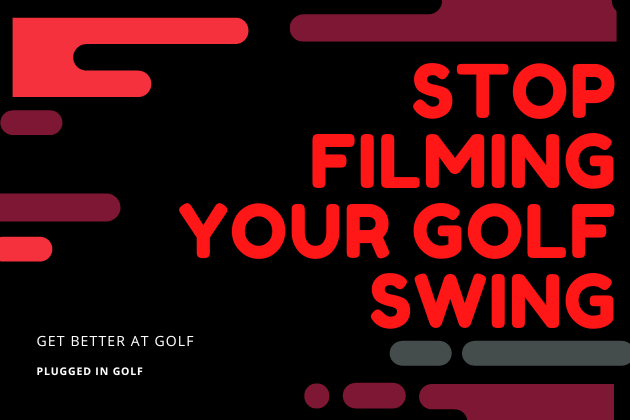
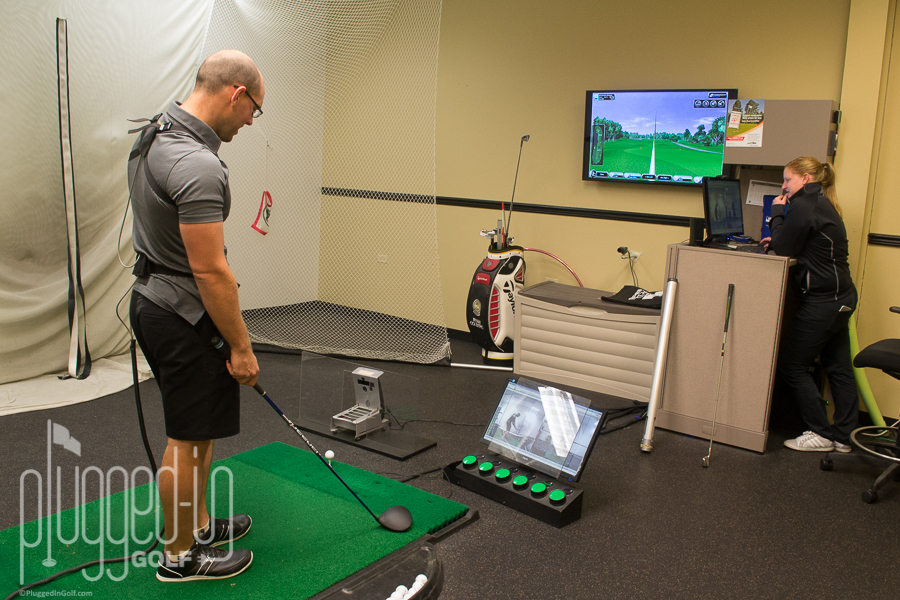
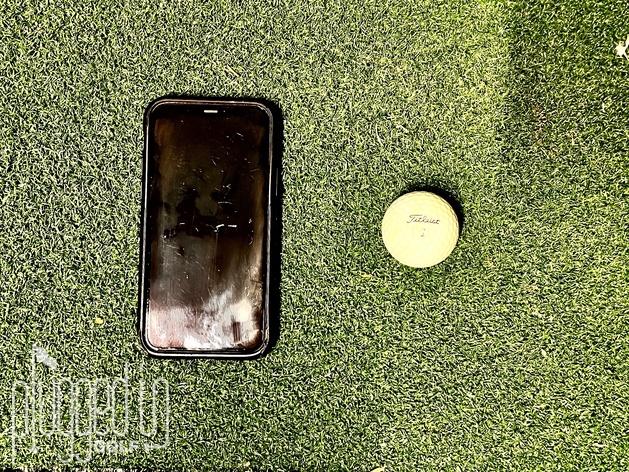
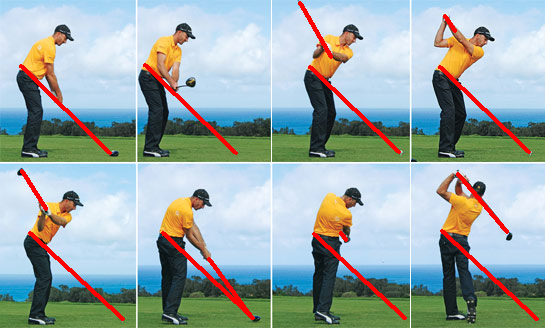
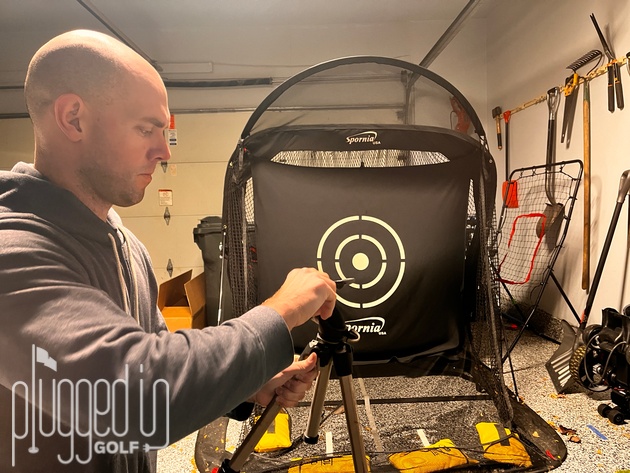
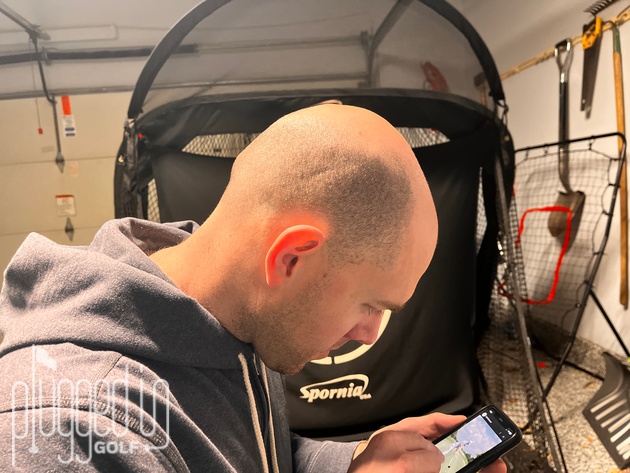
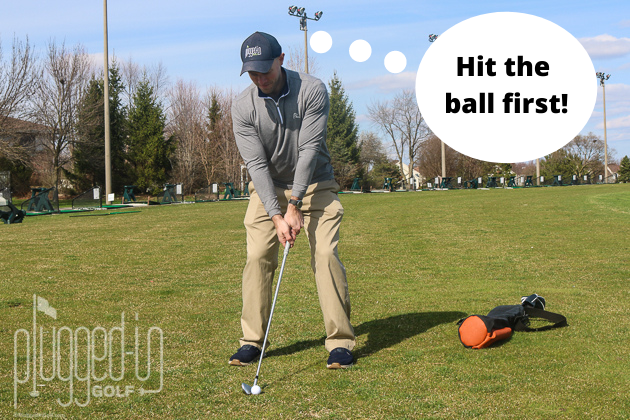
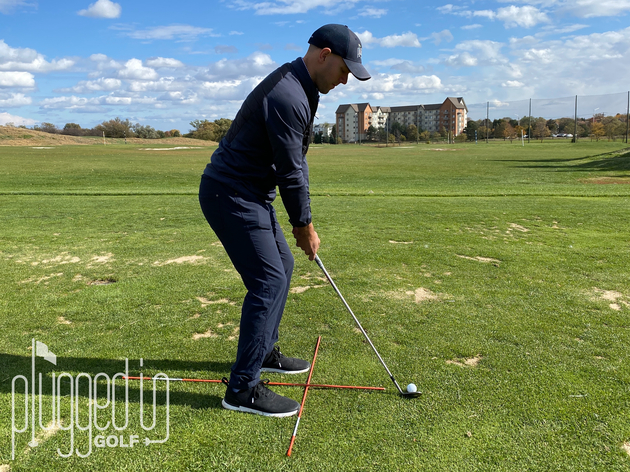
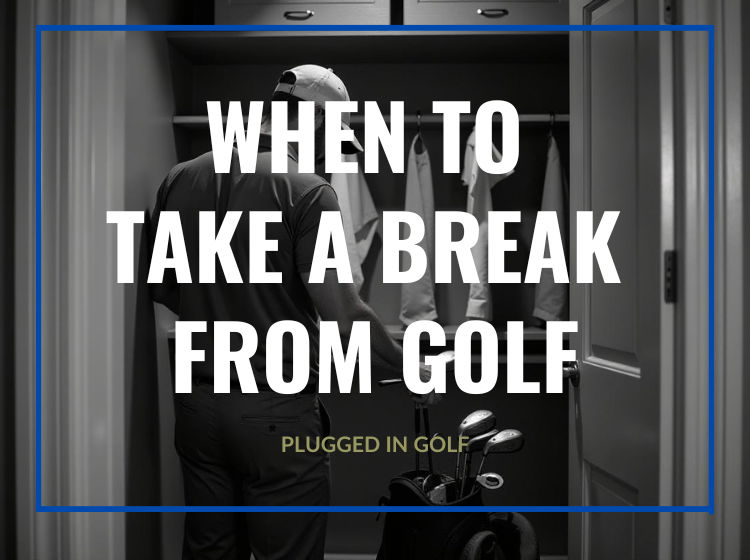
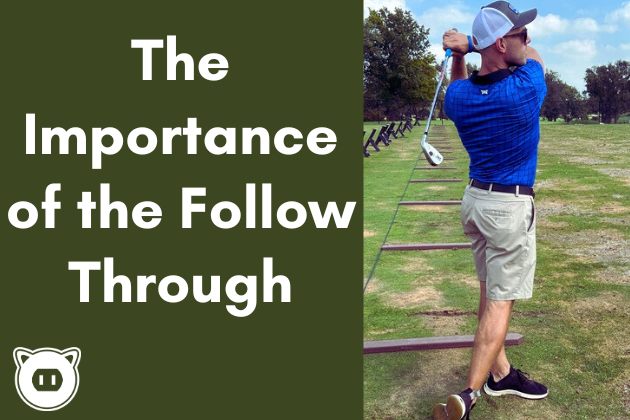
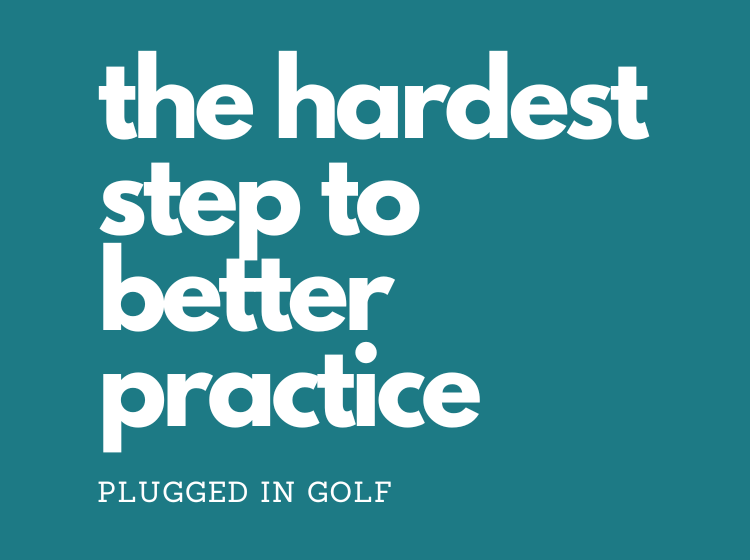









22 Comments
Matt, I’ll politely disagree on the merits of video. I use infrequent video (and understanding that inconsistent camera location can give very deceiving information) to calibrate a swing feel with what’s actually happening. For me, I look at backswing length—I’ve been trying to shorten it, on the advice of my former coach—and impact position. I use video to recalibrate what P3 actually feels like, as well as how different sequencing in the downswing translates to me losing my flippy release.
For both of those purposes, I find video to be necessary. You make great points in your article though.
George,
I appreciate the respectful comment. The question I would ask is how any of this translates to ball flight. I would be more interested in knowing what an effective impact position feels like and what it creates rather than what it looks like.
Best,
Matt
A shorter backswing, for me translates to more consistent strike and ballflight. I can’t tell if I’m shorter or not without the video aid.
Eliminating the flippy release, by finding the right set of motions and sequencing, helps me drop dynamic loft from the club’s loft (or even greater!) to something a little more reasonable. Which in turn drops launch from 75% of the club’s loft to a more efficient 50-60%. Video helps this, when correlated with the desired ballflight, because I can see on video what I actually did to achieve that motion. If I see the movement that I think was helpful though, on a video where I launched at 25 degrees (with a 32′ 7-iron), then I might start thinking that the implicated movement actually had nothing to do with the good launch, and it was some other feature of the videoed swing that led to the desired result. I can then look at those other movements and experiment with them (and associated feels) to see if those other movements contributed—and if so, how much?—to the desired ball path.
Jn my mind, it’s no different than using a launch monitor for the same kind of instant (video is slower, admittedly) feedback. There’s an added correlative step to the actual shot that the golfer needs to do, of course, which the LM already does for you. Though chasing launch monitor numbers, to the detriment of consistent ball flight and smaller shot dispersion, is a pitfall I think every LM owner stumbles into.
Your points are noted, and I think are true for a lot of self-guided golfers obsessed with their swing videos. (Though this may be said of professionally guided instruction as well!) IME, quite a bit of a famous, franchised chain of golf instruction businesses, utilize video swing analysis and comparison between the pupil and X professional, to indicate where the pupil needs to alter their motions and setup. Not necessarily ball flight, although that is looked at too.
Anyway, sorry for the length, and as always, thank you for the knowledgeable golf discussion and equipment criticism.
Wow. That’s a very deep look at your swing. I presume you are a single digit handicapper, close to a scratch golfer, yes? And perhaps an engineer too? To be honest, I got lost in your analysis, but admire your commitment to improvement. I’m not so sophisticated–I just go to my instructor, and do what he says. For me it’s fun and easy. Best of luck.
Oops, one more point I thought of, reading your reply. Completely agree in trying to replicate a successful impact position and ballflight result. But…it happens so fast, and has so many movements that, without some aid to slow things down and examine where I was to feel that way—which video analysis can do—I’m left perplexed with a bunch of conflicting feels.
Especially when, as happened on an unusually epic 3W shot, where I got angry at the last couple of f-uped shots, hauled off and smacked it, but I don’t have much idea of how I got to that great impact position. (Didn’t video that swing, LOL) And then you try to duplicate the feel, and damn near brain the person next to you with a shank…
Eye-opener. Thank you very much, Matt!
Matt. My swing coach lets me warm up with a bucket of range balls and then meets up with me with another bucket of balls and his iPad. He watches me hit several balls and watches the ball flights of each shot (mostly/somewhat repeatable) then shoots a quick video of my swing for one single shot. He then draws the lines and makes his critique and suggests I start attempting/doing/practicing THIS. That one short swing video is it and makes his point(s) succinctly, then it’s me and him sans video; watching me attempt over-and-over what he instructed me to do…which is what I’m paying him for~! Excellent article.
The point you made about pro golfers having different swings yet all work, is spot on. I think all that matters is how the club comes into impact. The rest is up to me. There are many ways to achieve this. Just find the one that works best for you.
Matt, I couldn’t agree more. I’ve found that when I used video during my practice sessions that the quality and consistency went out the window. When I put the camera and iPad away and just concentrated on what my GC3 and simulator were showing me, the quality of my practice sessions increased. I may use it every now and then to make sure I’m not swaying or cupping my wrists, but I’m no longer obsessed with if my swing looks like the tour pros. Of course, it doesn’t and I shouldn’t expect it to be.
Matt,
Very nice article on the subject.
A lot of golfers want to improve the apparence of their swing but the score card does not improve.
I am watching golf on tv and often I look a part of the swing that I want to improve. This help me to correct some problem.
But , I think the fastest way is seing a golf pro.
I remembered, last year on after a fitting for irons, I was struggling with my driver. The pro just replace me to a good starting position and everything fall in right place..
I appreciate your articles,
Thanks,
In reading the title of your article, I immediately wanted to disagree, but after digesting it I found I did agree with most if not all of your points….at least to some extent I think one of the key points you make is that there can be a lot to look at and most of us are not well versed enough to always know where we should be looking. The pro I work with is and he always somehow manages to get me swinging better. He can look at my swing from whatever angle he wants without disturbing me and provide immediate feedback. He’s not free, but he’s money well spent.
I do find that I can use video in some instances where I am checking for the common mistakes I seem to make such as setting up too slumped over and jerking the club inside on the takeaway. I don’t always “feel” like I’m doing either of these, but with video I can see it. Still I don’t feel like I could have done this without having taken lessons from the pro and learned what goes wrong in my swing and how I can correct it.
Great article, thx! I don’t use video on myself, but I do take lessons where a *PGA certified teaching pro* (I wrote all that out to emphasize a point) uses video as one more teaching aid (amongst others) — i.e. he is the one drawing lines on the video, and he is the one analyzing my swing and offering corrections.
Then I go and practice what he told me.
And guess what? Yep, I’m making progress with improving my swing. And how do I know that? By hearing and feeling a better contact, and by seeing a better ball flight 👍
I think you’ve nailed it in regards to the general golfer. You’re right in most all the points you’ve made about people overthinking filming their golf swing and don’t know what to look for. I think what would be more helpful is the right way to use video. The truth is more people should see their swing a few times to understand what the “real” is vs. their own “feel.” When you use it sparingly, video can be extremely helpful when integrated properly. What I mean by that is most people should pair working with an instructor and having them show them what to be looking for / study if their practice / homework is actually making progress when they are alone on the range. Rather than hitting an entire bucket of balls. Hit 1/3 of that bucket, maybe film every 10th swing (vs. every swing). And spend less time pounding golf balls and a little time looking at what you’re really doing every so often. Use the alignment sticks like you said in between the filming and then on the 10th or 20th ball see if you’re making any bit of progress. I also like when you see a certain ball flight/hit a window and you go back to the video to see and understand why that happened. Then you can try to bottle up that feel and hit a few without recording to get to that window/launch monitor numbers again.
Video can also help the golfer save money b/c golf’s reputation of being for rich people. Meaning, if you can’t afford to get regular lessons from a coach. Get lessons with video takeaways to take to the range by yourself. Understand what to look for on video, so you can do your homework without the coach. Don’t film every swing, but again maybe every 10th swing and see if you’re making progress without having to pay for the lesson. As you get better, sign up for another lesson and another set of things to be looking for / practicing on video.
I have lots of videos of my swing stored on a hard drive somewhere. Most of them I have never reviewed. I’ve stopped cluttering up my hard drives with my golf swing videos. If I ever get the time, I’ll delete them. I might have gained an insight or two from video but nothing that changed my game as much as integrating the feel of my successful shots into my swing. I do like a launch monitor but that’s because I practice into a net quite a bit where there is minimal ball flight to track. On the range I’ll only use the monitor for a few shots to get a baseline for how the numbers translate ‘in range reality’ to what I’m seeing in a ‘net’ session. And none of that translates directly to the course – gotta love the game.
Matt,
Another great piece, thank you. I do actually think the highlight was the “Fair warning to commenters”! Keep up the outstanding content, thanks.
I totally agree with all of this article. Filming your swing is fun but I struggle to see any tangible benefits from self analysis. I think I know what I am banging on about when I review my swing but in reality it’s all guess work and does nothing to identify how to fix it because every ‘fix’ probably breaks something else.
Video always seems like a great idea. Then I see my swing on video and wish I hadn’t.
Patio to taking a video of it, I thought my swing was as long and smooth as Oostie’s and Freddie’s. Video showed more like Rahm only without the legs, ass or power.
Hahahaha. Ignorance is bliss. :)
Interesting article and training links. I video my swing about twice a year and mostly looking down range and while actually on the course so I can see my ball flight (using an – Shot Tracer). I don’t look at the videos until after I get home. The one thing you did not address that most people probably are not aware of us is that most phone cameras, unlike highspeed cameras, distort the picture. Specifically the club shaft at or near impact. If the shutter speed is fast enough to show the club at or near impact, more often than not, it will look like the shaft is flexed backwards, as if the head is ahead of the shaft, not behind it. Leading the viewer to think they released too early when in fact it is the way phone camera scans and records the image from top to bottom, So on a 100 mph swing, as the image is scanned from the top of the screen to the bottom of the screen it makes the flex of the club look backwards. If the phone could scan the image from bottom to top it would reverse the flex of the shaft shown on screen.
I took this advise to heart 40 years ago. 18 holes of golf with my regular foursome in Chicago and then off to the driving range. My buddy brought along his video camera and his VCR (or whatever they were called back then) and we hit balls and recorded our swings. Back to the closest persons house, beverages and watch our swings. Good thing I had not eaten lunch.
It took me at least 3 months to get over that experience. Never again.
New apps for iPhone or Android use artificial intelligence to analyze many mistakes. It is very easy to record a video these days with your smartphone and a tripod. While apps like UpT Golf won’t solve all of the problems of golfers, they can help a lot. And even golf coaches may slow down videos, draw some lines, so this tool is helpful for coaching as well.